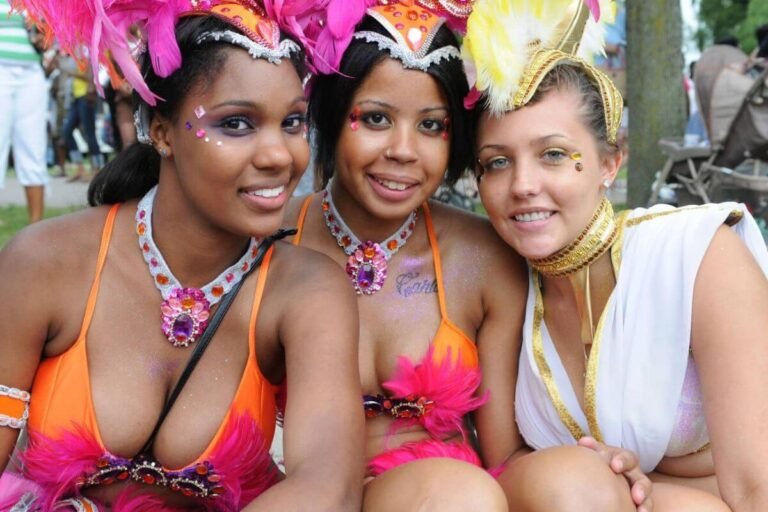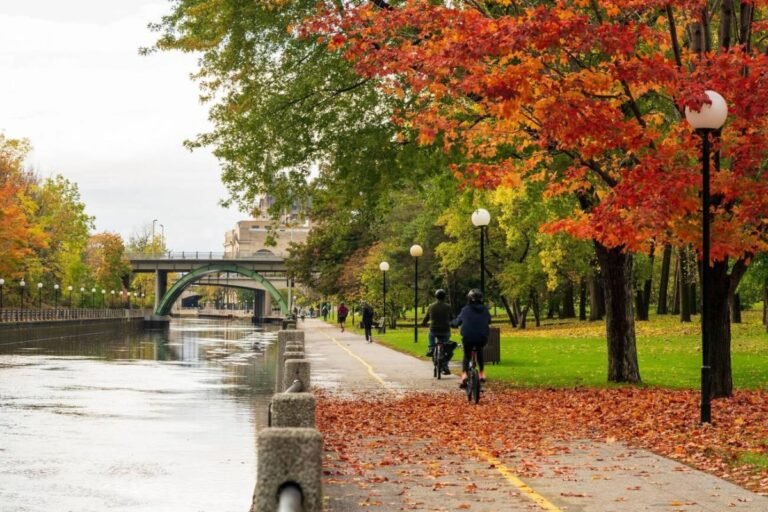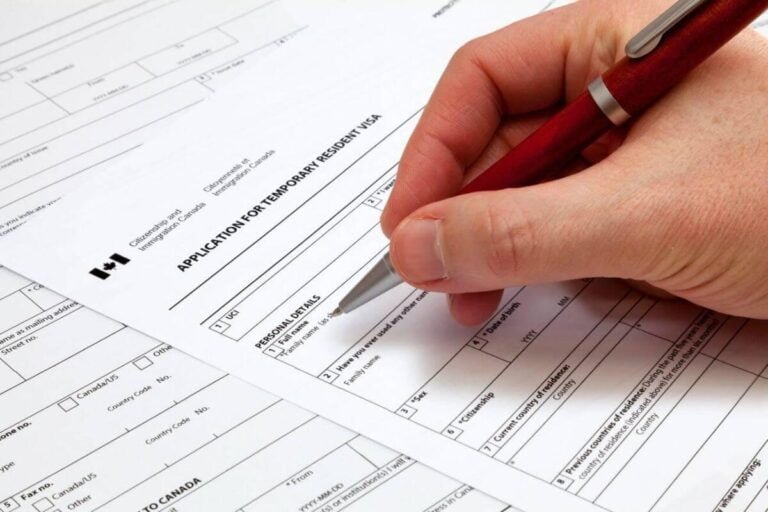Introduction
The Royal BC Museum in Victoria, British Columbia, is a treasure trove of knowledge and history, offering visitors an in-depth look at the province’s natural and human heritage. From ancient Ice Age creatures to the cultural traditions of Indigenous peoples, the museum’s exhibits provide a comprehensive and engaging exploration of British Columbia’s past and present. This renowned institution is not only a center for preservation and education but also a place where history comes alive through interactive displays and immersive experiences.
History of the Royal BC Museum
Founding and Early Years
Established in 1886, the Royal BC Museum began as a modest institution with a mission to collect, preserve, and showcase artifacts and specimens representing British Columbia’s natural and human history. Over the years, it has grown into one of Canada’s premier cultural institutions, known for its extensive collections and innovative exhibits.
Major Milestones
Throughout its history, the museum has achieved several significant milestones. The acquisition of key collections, the construction of modern facilities, and the introduction of groundbreaking exhibits have all contributed to its reputation as a world-class museum. Notable events include the opening of the First Peoples Gallery in 1977 and the Royal designation granted in 1987.
Evolution of Exhibits
The museum’s exhibits have evolved considerably since its inception. Initially focused on natural history, the collection has expanded to include comprehensive displays on human history, particularly the diverse cultures and histories of Indigenous peoples in British Columbia. This evolution reflects the museum’s commitment to providing a balanced and inclusive representation of the province’s heritage.

Permanent Exhibits
Natural History Gallery
The Natural History Gallery offers a fascinating journey through British Columbia’s diverse ecosystems. From the lush coastal rainforests to the icy habitats of the Ice Age, the gallery showcases the province’s rich biodiversity. Visitors can marvel at life-sized models of animals, explore interactive displays, and learn about ongoing conservation efforts.
First Peoples Gallery
The First Peoples Gallery is dedicated to the history and cultures of Indigenous peoples in British Columbia. This gallery features a stunning collection of artifacts, including totem poles, ceremonial regalia, and traditional art. Through multimedia presentations and personal stories, visitors gain a deeper understanding of the resilience and contributions of Indigenous communities.
Modern History Gallery
The Modern History Gallery chronicles British Columbia’s development from the colonial era to the present day. Exhibits cover significant events such as the Gold Rush, the construction of the Canadian Pacific Railway, and the growth of urban centers. This gallery provides insights into the social, economic, and technological changes that have shaped the province.
Special Exhibits
Rotating Displays
In addition to its permanent galleries, the Royal BC Museum hosts a variety of special exhibits that rotate throughout the year. These displays often feature rare artifacts, contemporary art, and thematic presentations that offer fresh perspectives on historical and cultural topics.
Recent Highlights
Recent special exhibits have included “Egypt: The Time of Pharaohs,” which showcased ancient Egyptian artifacts, and “Orcas: Our Shared Future,” which explored the complex relationship between humans and orcas in the Pacific Northwest. These exhibits have drawn large crowds and received widespread acclaim for their depth and creativity.
Upcoming Exhibits
The museum continually plans new and exciting exhibits to keep visitors engaged and educated. Upcoming exhibits will explore themes such as climate change, the history of film and media in British Columbia, and the cultural exchanges between Indigenous and settler communities.
Exploring the Natural History Gallery
Coastal Forest
The Coastal Forest exhibit immerses visitors in the dense, verdant forests of British Columbia’s coastline. Life-sized models of animals such as bears, wolves, and owls inhabit this lush environment, highlighting the intricate relationships within these ecosystems. Interactive displays educate visitors about the flora and fauna unique to this region.
Marine Life
The Marine Life exhibit takes visitors beneath the waves to explore the rich marine biodiversity of the Pacific Ocean. From colorful fish to majestic whales, the exhibit showcases the incredible variety of life found in British Columbia’s coastal waters. Interactive elements allow visitors to learn about marine conservation and the importance of protecting these fragile ecosystems.
Ice Age Mammals
The Ice Age Mammals exhibit transports visitors back in time to an era when mammoths and saber-toothed cats roamed the land. Life-sized models and fossil displays provide a glimpse into the prehistoric past, while informative panels explain the scientific methods used to study these ancient creatures.
Delving into the First Peoples Gallery
Indigenous Cultures
The Indigenous Cultures exhibit is a profound exploration of the diverse cultural traditions of British Columbia’s Indigenous peoples. The exhibit includes intricately carved totem poles, traditional clothing, and ceremonial objects that highlight the artistry and spirituality of these communities.
Art and Artifacts
This section of the gallery features a remarkable collection of Indigenous art and artifacts. From exquisite beadwork to powerful contemporary art, the exhibit demonstrates the ongoing creativity and cultural significance of Indigenous art forms. Visitors can learn about the symbolism and techniques behind these works.
Historical Narratives
The Historical Narratives exhibit uses personal stories and multimedia presentations to convey the rich history of Indigenous peoples in British Columbia. Oral histories, photographs, and videos provide a deeper understanding of the experiences and resilience of these communities through time.
Understanding the Modern History Gallery
Colonial Era
The Colonial Era exhibit explores the period of European settlement in British Columbia. Displays include artifacts from early settlers, historical documents, and reconstructions of colonial life. This exhibit provides insights into the challenges and conflicts that arose during this transformative period.
Gold Rush
The Gold Rush exhibit delves into one of the most dramatic events in British Columbia’s history. Through artifacts, maps, and multimedia presentations, visitors can learn about the frenzy for gold that brought thousands of prospectors to the region and its lasting impact on the province’s development.
Industrialization and Urban Growth
This exhibit examines the rapid industrialization and urban growth that followed the Gold Rush. Displays include early industrial machinery, photographs of burgeoning cities, and accounts of the social changes brought about by these developments. Visitors can trace the evolution of British Columbia from a frontier region to a modern urban society.
Interactive and Educational Programs
Workshops
The Royal BC Museum offers a variety of workshops designed to engage visitors of all ages. These workshops cover topics ranging from traditional crafts and natural history to contemporary art and cultural practices. Participants can enjoy hands-on learning experiences led by knowledgeable instructors.
Guided Tours
Guided tours are available for those who wish to gain deeper insights into the museum’s exhibits. Expert guides provide detailed explanations and answer questions, enhancing the educational experience. Specialized tours focusing on specific themes or collections are also offered.
School Programs
The museum’s school programs are designed to complement classroom learning and inspire a love of history and science. These programs include guided tours, interactive workshops, and educational resources tailored to different grade levels. Teachers can also access online resources to support their lessons.
Visitor Information
Hours of Operation
The Royal BC Museum is open year-round, with varying hours depending on the season. It is advisable to check the official website for the most current hours of operation before planning your visit.
Admission Fees
Admission fees vary by age and category, with discounts available for seniors, students, and groups. Membership options are also available, offering unlimited access and additional benefits. Special pricing may apply during certain exhibits or events.
Accessibility
The museum is committed to providing an accessible experience for all visitors. Facilities include ramps, elevators, accessible restrooms, and wheelchair rentals. Assistance dogs are welcome, and the museum offers a range of services to support visitors with disabilities.
How to Get to the Royal BC Museum
By Car
The Royal BC Museum is conveniently located in downtown Victoria, with ample parking available nearby. Visitors can follow clear signage to reach the museum, and detailed driving directions are available on the museum’s website.
Public Transport
Public transport options include buses and ferries that connect Victoria with other parts of Vancouver Island and the mainland. The museum is easily accessible via public transit, with several bus routes stopping nearby.
Nearby Attractions
Visitors to the Royal BC Museum can also explore other nearby attractions, such as the BC Legislature, Victoria’s Inner Harbour, and the historic Empress Hotel. These sites offer additional cultural and historical experiences, making a trip to the museum part of a broader exploration of Victoria.
Tips for Visiting the Royal BC Museum
Best Times to Visit
To avoid the busiest times, consider visiting the museum during weekday mornings or late afternoons. Off-peak seasons, such as fall and winter, typically see fewer visitors, providing a more relaxed experience.
Must-See Exhibits
While all exhibits at the Royal BC Museum are worth exploring, some standouts include the Natural History Gallery’s Coastal Forest and Marine Life displays, the First Peoples Gallery’s totem poles, and the Modern History Gallery’s Gold Rush exhibit.
Photography Tips
Photography is allowed in most areas of the museum, but flash photography and tripods are generally prohibited. To capture the best images, take advantage of natural lighting, focus on unique details, and be mindful of other visitors.
The Role of the Museum in Education and Research
Academic Collaborations
The Royal BC Museum collaborates with academic institutions to advance research in various fields, including archaeology, anthropology, and environmental science. These partnerships help to uncover new knowledge and provide valuable learning opportunities for students and researchers.
Research Initiatives
The museum conducts ongoing research to enhance its collections and exhibits. This research includes fieldwork, archival studies, and laboratory analysis, contributing to the broader understanding of British Columbia’s natural and human history.
Publications
The museum publishes a range of materials, including research papers, exhibition catalogs, and educational guides. These publications are available to the public and provide deeper insights into the museum’s collections and research findings.
Community Engagement and Outreach
Local Partnerships
The Royal BC Museum works closely with local organizations and communities to promote cultural heritage and public education. These partnerships include collaborative projects, community events, and shared resources, fostering a sense of connection and mutual support.
Public Programs
The museum offers a variety of public programs designed to engage and educate visitors. These programs include lectures, film screenings, and hands-on activities that cater to diverse interests and age groups.
Volunteer Opportunities
Volunteers play a crucial role in the operations of the Royal BC Museum. Opportunities are available in areas such as visitor services, education, and collections management. Volunteering provides valuable experience and a chance to contribute to the museum’s mission.
The Future of the Royal BC Museum
Planned Expansions
The Royal BC Museum has several expansion projects in the pipeline aimed at enhancing its facilities and exhibits. These plans include the construction of new galleries, improved visitor amenities, and expanded educational spaces.
Innovations in Exhibit Design
The museum is committed to incorporating the latest technologies and design innovations to create engaging and interactive exhibits. Future projects will focus on enhancing the visitor experience through immersive displays and digital media.
Future Goals
Looking ahead, the Royal BC Museum aims to continue its role as a leader in cultural preservation and education. Future goals include expanding its collections, increasing community outreach, and fostering global collaborations to share British Columbia’s rich heritage with the world.
FAQs
What are the best times to visit the Royal BC Museum?
Weekday mornings and late afternoons, especially during the off-peak seasons of fall and winter, are the best times to visit to avoid crowds.
Are there guided tours available at the Royal BC Museum?
Yes, guided tours are available and provide detailed explanations of the exhibits. Specialized tours focusing on specific themes are also offered.
How can I reach the Royal BC Museum by public transport?
The museum is easily accessible via public transit, with several bus routes stopping nearby. Detailed information on public transport options is available on the museum’s website.
Is the Royal BC Museum accessible for visitors with disabilities?
Yes, the museum is committed to accessibility, offering ramps, elevators, accessible restrooms, and wheelchair rentals. Assistance dogs are also welcome.
What are the admission fees for the Royal BC Museum?
Admission fees vary by age and category, with discounts for seniors, students, and groups. Membership options are also available for unlimited access and additional benefits.
Does the Royal BC Museum host any special exhibits?
Yes, the museum hosts a variety of special exhibits throughout the year, featuring rare artifacts, contemporary art, and thematic presentations on historical and cultural topics.
Conclusion
The Royal BC Museum stands as a beacon of cultural and historical preservation, offering a deep and engaging exploration of British Columbia’s natural and human history. From its comprehensive permanent galleries to its dynamic special exhibits and interactive programs, the museum provides an enriching experience for visitors of all ages. Whether you’re a history buff, a nature enthusiast, or simply curious about the world, a visit to the Royal BC Museum promises to be enlightening and inspiring. Plan your visit today and embark on a journey through the rich tapestry of British Columbia’s heritage.
Suggestions for Inbound and Outbound Links
Inbound Links:
- Detailed guide on exploring the Natural History Gallery.
- Learn more about the history of the Royal BC Museum and its evolution.
Outbound Links:
- Official Royal BC Museum website for updated information on hours of operation, admission fees, and special exhibits.
- BC Transit for details on bus routes and public transport options to the museum.



